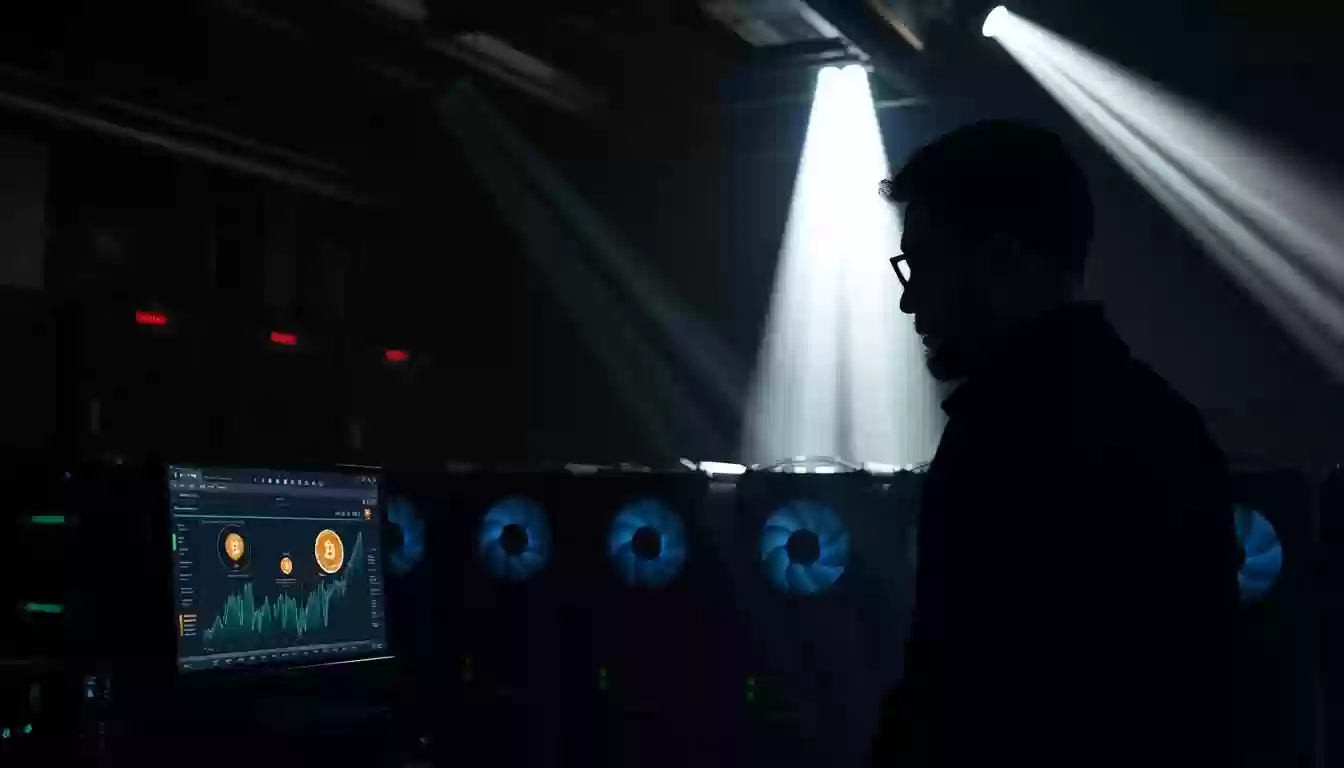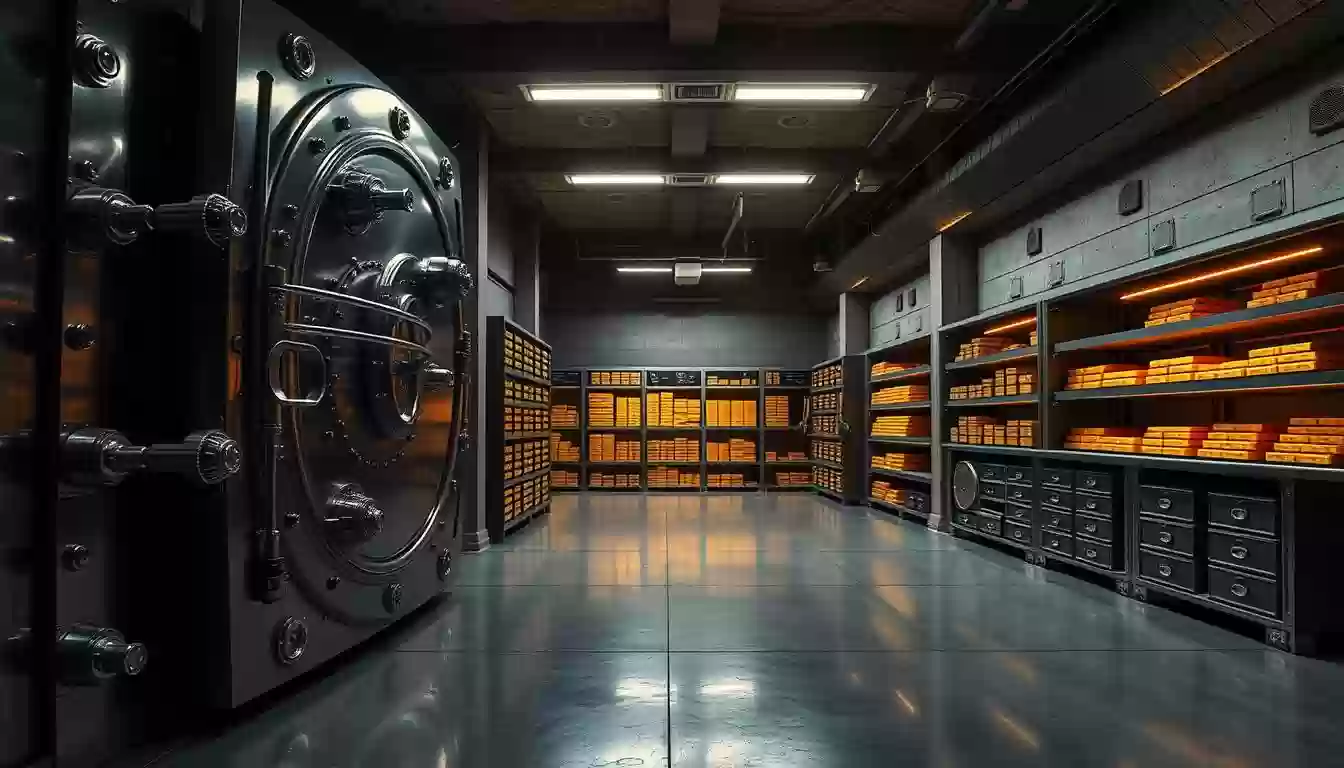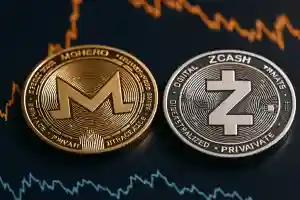What Happens When a Solo Miner Finds a Bitcoin Block?
 22 Feb 25
22 Feb 25
In the world of cryptocurrency mining, a key question is: what happens when a solo miner finds a Bitcoin block? Solo mining is when one miner competes against many to find a special hash value. The first to find it gets to add a new block to the blockchain and earns rewards.
The miner's power and resources are key in finding blocks. With Bitcoin transaction fees at $1.50 on average, miners work hard to fill blocks. The reward for finding a block is 3,125 BTC, which halves every four years, making it a big incentive.
Solo mining in cryptocurrency is complex and requires a lot of power and resources. The Solayer project can process over 1,000,000 transactions per second. This shows the big chance for finding blocks and earning rewards, making it appealing for those in the field.
Understanding Solo Bitcoin Mining Fundamentals
Solo Bitcoin mining is when one miner tries to find new blocks to earn 6.25 BTC. The mining success rate depends on the miner's hash rate and the network's difficulty. Miners are key to keeping the Bitcoin network safe and reliable.
For solo mining, you need a lot of computing power. This is usually done with special hardware like ASICs. The proof of work system is what makes Bitcoin secure. It requires miners to solve puzzles to add new blocks. For more details, check out solo mining vs pooled mining.
https://www.youtube.com/watch?v=peCazF38jBQ
To increase your mining success rate, you need good hardware and always be online. The blockchain technology makes sure all transactions are safe and open. The proof of work stops bad actors from messing with the network.
The Moment of Discovery: Finding a Bitcoin Block
Finding a Bitcoin block is a thrilling moment for solo miners. The block discovery process is complex. It needs a lot of computational power to solve puzzles.
The mining difficulty changes every 2,016 blocks. This keeps the average time to find a block around 10 minutes.
The current mining profitability for solo miners is low. This is because of the high mining difficulty and the low chance of finding a block. But, when a solo miner finds a block, they get a reward. They receive 6.25 BTC and any transaction fees from the block.

The block discovery process is tough and competitive. Many miners are racing to find the next block. The mining difficulty and mining profitability are closely linked. Solo miners must think carefully about whether to mine solo or join a mining pool.
Bitcoin Solo Mining Rewards and Block Discovery Process
Cryptocurrency mining can be very rewarding, but finding a block is a complex task. The current reward is 3.125 BTC for each block mined. This is a big incentive for miners. Plus, transaction fees can add extra income, making mining success rate key to solo mining profits.
In cryptocurrency mining, mining pool options greatly affect how often you get paid. Solo mining is rewarding but risky, with low block-solving chances. As Bitcoin grows, knowing how to find blocks and the rewards is vital for miners.
Exploring the block reward structure and verification process helps miners. They can better understand cryptocurrency mining and improve their operations. Success in solo mining or mining pools comes from grasping the block discovery process and optimizing strategies.
Technical Aspects of Block Validation
Block validation is key in blockchain technology. It needs a lot of computing power and energy. This process checks transactions and adds new blocks using cryptography and digital signatures.
The proof of work mechanism is vital. It makes miners solve hard puzzles to validate transactions and add new blocks. This keeps the network safe.
The mining difficulty is important too. It sets how hard the puzzles are. A higher difficulty means more complex puzzles, needing more power and energy. This makes the network more secure against attacks.

In blockchain, proof of work is essential for network security. It makes sure miners solve hard puzzles, keeping the network safe. The mining difficulty is adjusted often to keep the puzzles challenging, preventing attacks.
Mining Success Rate and Probability Factors
The mining success rate is key to making mining profitable. Several things affect it, like the hash rate, network difficulty, and how often blocks are found. A higher hash rate means more chances to mine a block. But, a higher network difficulty makes it harder.
The time between blocks also matters a lot. Miners have many choices when it comes to mining pools. Some pools offer more rewards but charge higher fees. Others give less rewards but have lower fees. The right pool depends on what each miner wants.
The table below shows what affects mining success rate and how it impacts mining profitability.
| Factor | Impact on Mining Success Rate | Impact on Mining Profitability |
|---|---|---|
| Hash Rate | Increases chances of mining a block | Increases revenue, but also increases costs |
| Network Difficulty | Reduces chances of mining a block | Reduces revenue, but also reduces costs |
| Time Between Blocks Statistics | Affects the frequency of block rewards | Affects the consistency of revenue |
In summary, mining success rate is complex. It depends on hash rate, network difficulty, and block time. By understanding these and picking the best mining pool options, miners can improve their mining profitability.
Financial Implications of Solo Block Discovery
Cryptocurrency mining, like solo mining, can be very profitable. But, it also comes with big financial risks. The Bitcoin block reward is now 6.25 BTC per block. Miners also earn from transaction fees, which often make up more than half of the rewards.
The financial effects of solo block discovery are complex. They depend on mining profitability and the choice of mining pool options.
When looking at mining pool options, it's key to check the fees. Mining pools charge a fee, usually between 1% and 3% of what you earn. A 2% fee difference can mean thousands of dollars lost over time for big miners.
For example, a miner earning 1 BTC from a pool with a 1% fee gets 0.99 BTC. But, a miner from a pool with a 3% fee gets only 0.97 BTC.

Miners should also think about the payout methods and hash rates of different pools. FPPS payouts can increase earnings during busy times but might have higher fees. PPLNS payouts depend on the shares submitted before a block is found, leading to possible long waits for payment.
By understanding these factors and picking the right mining pool, miners can boost their earnings. This way, they can make their cryptocurrency mining more profitable.
Managing and Securing Your Mining Rewards
As a miner, it's key to manage and secure your mining rewards. This ensures mining profitability and guards your investments. With blockchain technology on the rise, miners have many ways to keep their rewards safe. These include hardware wallets and encryption.
Wallet Security Best Practices
To keep your mining rewards safe, follow wallet security best practices. Use hardware wallets and turn on two-factor authentication. Also, look into mining pool options that are secure and reliable.

Tax Implications and Reporting
Miners need to know the tax implications of their mining rewards. They must report accurately to avoid legal trouble. By understanding taxes and following security tips, miners can safeguard their investments. This ensures long-term mining profitability.
Common Challenges in Solo Mining Operations
Solo mining operations face big challenges, like high mining difficulty and low success rates. The network's total hash power keeps going up, making it harder to solve complex problems. This makes it tough for solo miners to earn rewards.
The cost of energy is also a big issue. Using less energy can lower costs and make mining more profitable. But, it's hard to find the right balance.
Solo miners often struggle with not having a steady income. They might go weeks or months without earning anything. This is where mining pool options help, as they offer more regular payouts. But, mining pools charge fees, which can cut into profits.
For more info on solo mining, check out solo mining operations. It talks about the good and bad sides of solo mining.
When picking a mining pool, look at the fees and the pool's total hash rate. A higher hash rate means better chances of mining a block and more payouts. Here's a table with some popular mining pools and their fees:
| Mining Pool | Fees |
|---|---|
| F2Pool | 2.5% |
| Braiins Pool | 2.5% |
| Binance Pool | 4% |
Comparing Solo Success Stories and Statistics
Cryptocurrency mining is tough for solo miners, but many have found success. They often pick the right mining pool options. Learning from them can help us do better in mining.
Cryptocurrency mining needs tech know-how and a bit of luck. Looking at solo miners' past success can teach us a lot. This helps us make better choices for our mining and pick the best pools.
There's no sure way to always win, but we can learn from the winners. By studying their strategies, we can craft our own plans.
Future Prospects for Solo Miners
As Bitcoin grows, solo miners face tough competition from big mining operations. This makes mining profitability a big worry. The network's difficulty is rising, and it needs a lot of power and money to keep up. But, new chances might come for solo miners with blockchain technology getting better.
One way solo miners could do better is by joining mining pool options. These pools let small miners work together, sharing rewards. This makes payouts more steady and easier to get into. By looking into the different mining pool options, solo miners can pick the best strategy for them.
In short, solo miners' future is not set in stone. But, with the right plan and knowledge of blockchain technology and mining pool options, they can succeed. Keeping up with new tech and strategies can help solo miners face the Bitcoin network's changes.
Conclusion
Exploring solo Bitcoin mining shows it's a big decision between solo and pool mining. Cryptocurrency mining gives solo miners independence and rewards, but it's tough. It needs a lot of money upfront and is unpredictable.
On the other hand, pool mining offers steady income but with fees and centralization worries. The choice between solo and pool mining depends on your goals, skills, and success rate. Solo miners might see higher rewards, but it's risky. Pool mining is steadier but has its own downsides.
As mining technology changes, miners must keep up. They need to choose what's best for them, based on their situation. Staying informed and flexible is key in this ever-changing field.
FAQ
What is the basic process of solo Bitcoin mining?
Solo mining is a complex task that needs lots of computing power. Miners compete worldwide to find a special hash value. The first to find it gets to add a new block to the blockchain and earns rewards.
What are the differences between solo and pool mining?
Solo mining means one miner does all the work and keeps all the rewards. Pool mining combines efforts, sharing rewards based on each miner's contribution.
What hardware and software setup is required for solo Bitcoin mining?
Solo mining needs special hardware, like ASICs, to compete. You also need mining software that works with the ASICs and runs a full Bitcoin node.
What is the excitement and challenge associated with finding a Bitcoin block as a solo miner?
Finding a block is thrilling but tough. It's hard to succeed and uses a lot of energy, making solo mining challenging.
How does the current block reward structure work for solo Bitcoin mining?
Solo miners get 3.125 BTC per block mined. They also earn from transaction fees. New blocks are verified and confirmed before being added to the blockchain.
What is the process of validating transactions and creating new blocks in the Bitcoin network?
Verifying transactions and creating blocks uses hashing and digital signatures. The mining difficulty is key to the blockchain's security and efficiency.
How do mining success rate and probability factors impact solo Bitcoin mining?
Success in solo mining depends on hash rate and network difficulty. High-performance hardware is needed to compete. The time between blocks mined also affects success.
What are the financial implications of solo Bitcoin block discovery?
Solo miners can earn from block rewards and fees. But, there are risks like high energy costs and the chance of losing money if they can't find a block.
How can miners manage and secure their Bitcoin mining rewards?
Use secure wallets and follow best practices like encryption. Consider taxes and use long-term storage solutions like cold storage and multi-sig wallets.
What are the common challenges in solo Bitcoin mining operations?
Solo mining faces technical and financial hurdles. It requires advanced hardware and deals with high energy costs and low success rates.
What are some notable solo Bitcoin mining success stories and statistics?
Some solo miners have found and mined Bitcoin blocks. But, solo mining success rates are generally low, showing the tough competition.
What are the future prospects for solo Bitcoin miners?
Solo mining's future is uncertain due to rising difficulty and competition. Yet, new technologies and strategies might help solo miners succeed.




















